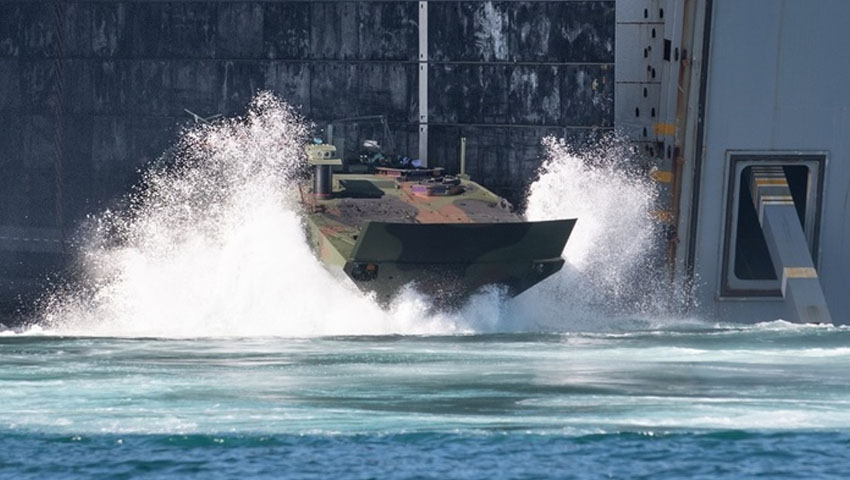BAE Systems has landed a US$113.5 million contract from the US Marine Corps to manufacture amphibious combat vehicles (ACV).
The British multinational has won a US$113.5 million contract for the production of an additional 26 ACVs.
The award was secured under the low-rate initial production (LRIP) testing phase of the program, adding to 90 ACVs already ordered. The Corps selected BAE Systems – in conjunction with partner Iveco Defence Vehicles – to replace the current fleet of assault amphibious vehicles (AAB).
Prior to pivoting towards the ACV, the USMC had planned a survivability upgrade across its AAV fleet (also constructed by BAE). This idea, however, was scrapped in favour of a complete overhaul initiative.
After the stop work order was issued in late August last year, a spokesman for the Program Executive Office for Land Systems stated: “The Marine Corps did make a decision to focus investment on modernisation rather than legacy systems. The key there really is, ACV performed a lot better than expected. And so the fact that the deliveries of ACV and AAV SU were approximately two quarters apart, basically six months or so apart, I think the decision was made, let’s just focus our resources on ACV.”
The ACV has been in LRIP since 2018 on the personnel carrier variant in the ACV family. In a recent press release, BAE Systems stated that the company envisions full-rate production to include additional variants and components, which may include:
Command and control capability;
A 30mm medium-calibre turret; and
A recovery version.
“The ACV provides the most survivable and mobile amphibious vehicle to the US Marines Corps for supporting the warfighters’ ability to successfully execute their unique expeditionary missions,” said John Swift, director of amphibious programs at BAE Systems.
“This award further demonstrates our commitment to that mission, it’s an important milestone for the program and represents a major step toward full rate production.”
Before full-rate production can be reached, however, a number of milestones are envisaged, including operator training, logistics demonstration and further capacity testing.









